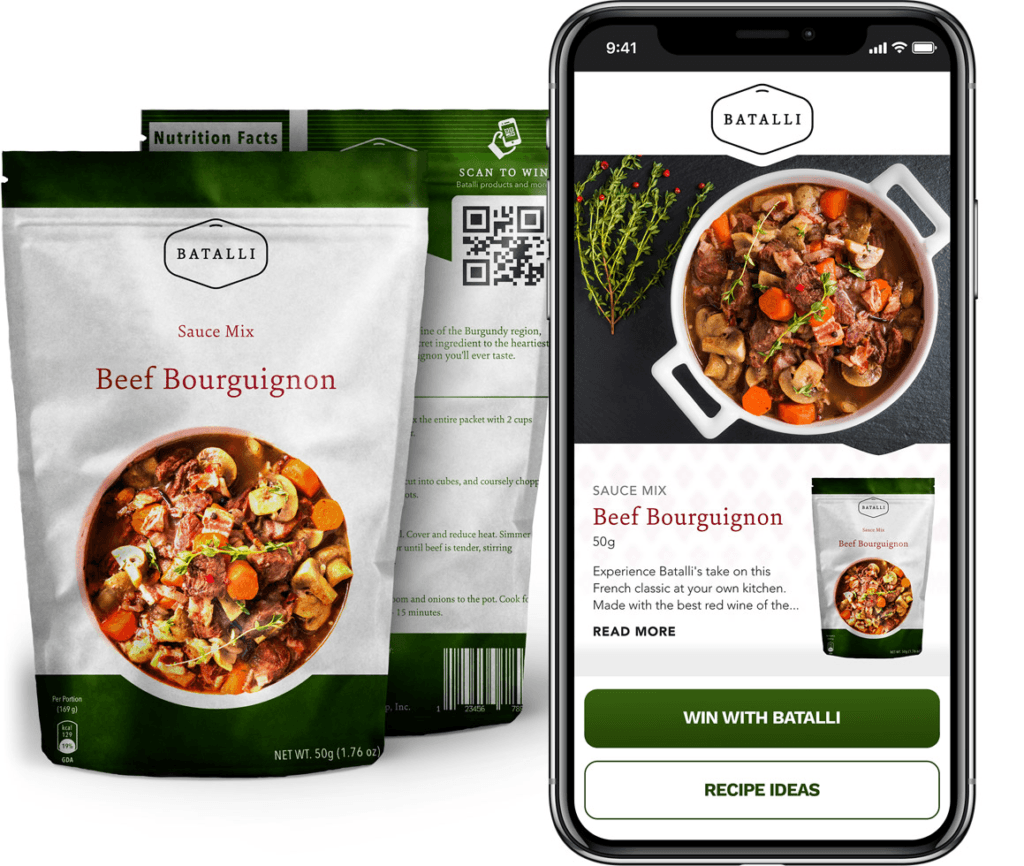2022 is just around the corner and we’re already seeing packaging trends lining up. Sustainability has been a huge buzzword in the packaging industry, and that doesn’t look like it’s going to change in the coming year.
According to Business Wire, the global sustainable packaging market size was $218.18 Billion in 2020 and it’s estimated that the growth will continue, reaching $323.32 Billion by 2026. Mordor Intelligence says that, “Rising environmental concerns and growing public awareness about eco-friendly products are the dynamic factors behind the rapid growth of the sustainable packaging market over the forecast period.”
So what does 2022 have in store for us?
The Rise of Smart Packaging
Smart packaging, also known as connected packaging, is on the rise. Connected packaging uses unique QR codes to make each package into a digital tool that delivers valuable insights and information to brand owners and consumers alike.
One of the great benefits of connected packaging is that it gives you the ability to trace a package’s journey from beginning to end. Consumers can use this track and trace ability by scanning the code and learning about a product’s sourcing ingredients, as well as the product’s journey. Brand owners can use it to obtain critical information about the supply chain and can track a package’s journey to the point of purchase and beyond, all the way through to disposal or recycling.
In an interview with FoodNavigator-USA, Anne Greven, head of food and agriculture innovation at Rabobank said “It’s all about revolutionizing supply chains, especially in proven weak spots due to the pandemic.”
Additionally, with serialized QR codes – the next wave in connected packaging which is seeing important growth in the CPG industry – vendors can drive direct-to-consumer (DTC) engagement with consumers from the grocery store shelf as well as collect detailed demographic and market data.
Utilizing Local Packaging Suppliers
When companies think of sustainability, it has to go beyond just eco-friendly packaging materials. The bigger question is how to cut down on their footprint.
The rising ‘buy local’ movement isn’t just for consumers anymore. Companies are starting to choose local packaging companies in earnest, instead of relying on overseas suppliers. This cuts down on fuel emissions that would come from shipping the packaging across the world.
Local packaging companies can also better help meet eco-friendly goals for that specific country, whether by using certified materials or working – or knowing how to work – with companies that can provide certification, like How2Recycle in the United States.
By working within their area or country, companies are proving a commitment to sustainable packaging.
Compostable Packaging Growth Continues
Many brands are making the switch to compostable packaging as a way to do their part in helping the environment and to tap into the market of eco-conscious consumers.
Research shows that using compostable packaging has proven to significantly cut down on landfill trash volume, reduce the carbon emissions it takes to haul and process materials, and create the optimal environment for all types of farms and gardens.
The Beginnings of Cold Seal Packaging
Cold seal packaging uses an adhesive to seal the package, and unlike heat sealing, doesn’t require any heat, just pressure.
Driving the adoption of cold sealing is its speed, as it can double line speeds vs.hot sealing. Another benefit of cold sealing is that because there is no heat, there’s no need to wait for the machines to heat up, and no need to worry about heat damaging your package or product.
Starting in 2021, the cold seal packaging market has been growing at a steady rate with more and more companies taking part, and 2022 looks to be continuing that trend.
Trending: Micro-Perforated Films
Micro-perforated films are films that have very small holes that are lasered in to allow interaction with the outside environment. As more benefits are found, more brands are coming on board. Research published on Markets and Markets shows that the global micro-perforated films market was USD 1.19 Billion in 2016 and is projected to reach USD 1.50 Billion by 2022.
Micro-perforated films extend a product’s shelf life, which helps to cut down on food waste. They do this by allowing air to circulate, but since the holes are so small, other agents are not able to get in.
These films are particularly helpful with fresh produce because the air circulation stops moisture from building up and keeps the produce fresh, while making sure they are still protected in the package.
Exploring Plant Based Materials
As the demand for sustainable packaging increases, companies are trying to meet expectations by experimenting with different plant based materials in their packaging.
The biggest ones on the market currently are packaging made from seaweed, hemp, or corn. Packaging made from these materials can break down much faster than plastic, and are more sustainable overall.
While plant based packaging is still a niche market, options in 2022 are increasing as the research shows the long term benefits.
Choosing a Sustainable Packaging Partner
ePac Flexible Packaging is watching upcoming sustainable trends and acting to meet business’s demand.
Our digital printing process is inherently more eco-friendly than traditional printing, with our use of carbon-neutral HP printers and polymer-based inks that don’t contain any hazardous air pollutants (HAPs).
We offer multiple sustainable packaging options including recyclable, post-consumer recycled (PCR), and compostable.
If sustainable premium packaging is your goal, call ePac today and learn more.


